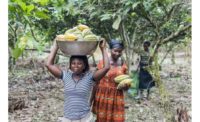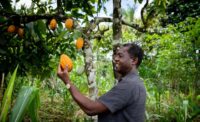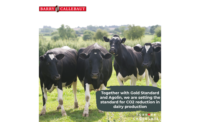Barry Callebaut has a target to become forest positive by 2025. This means that it has to develop a greater understanding of where deforestation is at risk of occurring in its supply chain. For cocoa it has worked in close partnership with the renowned environmental sustainability consultancy, Quantis, to develop an innovative carbon footprinting assessment to evaluate the impacts of land-use change (LUC) and deforestation driven by cocoa farming.
Through the combination of GPS, satellite imagery and farm-level data, this new assessment enables the company to gain a better understanding of the contribution of each farm or cooperative that we source from to our direct land-use change emissions.
Having a greater understanding of where deforestation is at risk of occurring, we can also establish a better link between forest protection activities and carbon accounting at farm level. Importantly, using satellite data also helps us to analyze deforestation events on the ground in greater detail. This provides us with the opportunity to engage with cocoa farming communities on the adoption of natural resource management and avoid activities; such as land-clearing for agriculture, which can result in deforestation.
Enabling customers to account for the carbon impact of their cocoa and chocolate
The development of this new assessment also helps customers with calculating their carbon impact more accurately and will enable Barry Callebaut to provide carbon neutral chocolate. Customers can input recipes into its carbon footprint calculator, get a clear view on the impact of their chocolate, and learn more about the methodology behind the numbers.
This assessment can help the company's customers to calculate their carbon impact more accurately and enable the company to provide carbon neutral chocolate solutions.
Working together to create a more sustainable chocolate and cocoa industry
As part of Barry Callebaut's Forever Chocolate commitments, it aims to be carbon and forest positive by 2025.
But it also looks beyond its own chocolate and cocoa supply chain. The company is working to create a movement to address the biggest challenges in its industry and can only do this by working together to develop innovative and scalable solutions.
This is why the company recommends the assessment to other companies that are committed to forest protection or would like to link forest protection activities at farm level with their carbon goals.





